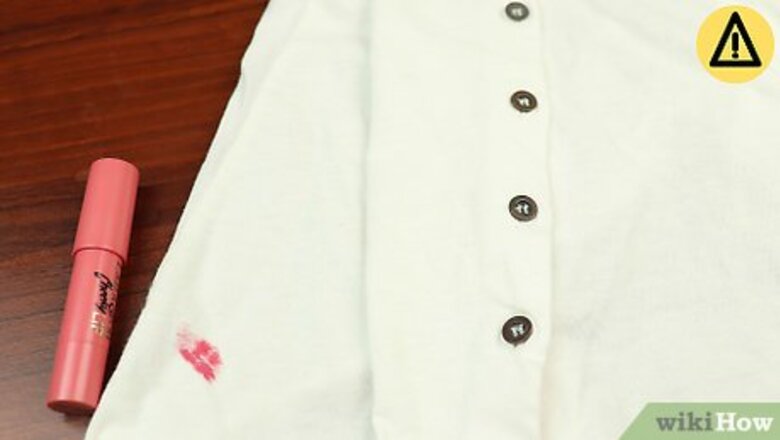
views
Applying Stain Remover Before Machine Washing
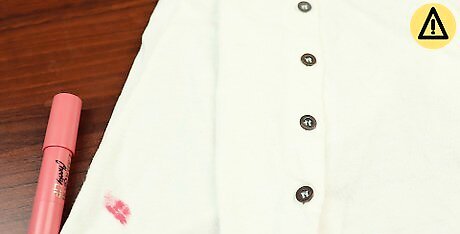
Know what caused the stain. The first thing to do when you are deciding how to deal with a stain is to work out what caused it. The principal thing to determine is whether it is an oily, or a non-oily stain. It’s important to figure this out because it influences what you’re first step will be. The majority of chemical stain removers are designed to work on all kinds of stains. Finding out if it is an oily or non-oily stain is mainly to direct your immediate response. Tips for which home made stain removers work best for specific stains are highlighted in the third method.
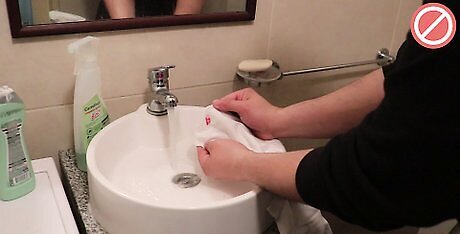
If it is an oily stain, avoid using water. If the stain is oily, avoid the obvious temptation to rinse it under cold water straight away. Oil repels water, so any water than comes into contact with the stain could contribute to it setting more strongly. Instead, dab it with a dry paper towel. Oily stains have a variety of sources, but most commonly include: Grease stains. Mascara. Lipstick. Foods which are rich in oil or butter.
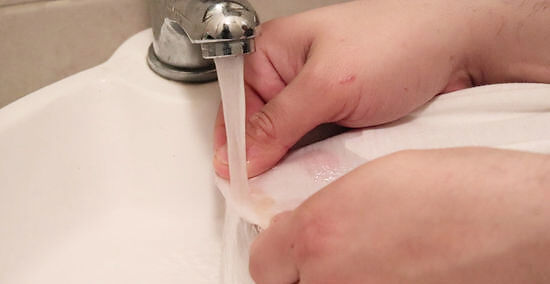
If it is not an oily stain, rinse with cold water. If the stains comes from a non-oily source, then usually the first thing to do is dab off any excess and then rinse it in cold water. If you hold the garment under the tap so that the water is hitting the back of stain, it can help to flush out the stain from behind. Holding the stained side facing the flow of water could press the stain further into the fabric. Typical non-oily stains on white clothes can include: Sweat stains. Non-oil based makeup. Foods that aren’t oily. Blood. Toothpaste. Dirt.
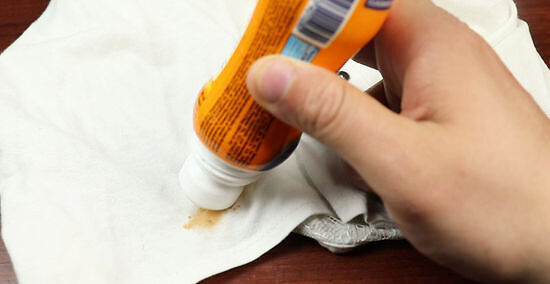
Apply stain remover to the stain. You can buy stain removal sprays, liquids and powders from your local store. There will most likely be quite a variety of products available, so look for one that is designed to work on white clothes if possible. The next step is simply to apply the stain removal powder or liquid to the stain according to the instructions on the packaging. Some products will recommend you apply it to the edges of the stain, others at the heart of the stain. Generally, you won't need to apply a particularly large amount for a small stain.

Place it in your washing machine. Once you have applied the stain remover, you simply put it into your washing machine and wash it as normal. Be sure to read the instructions carefully before you do this to check if the product you have recommends a particular temperature.
Making a Hydrogen Peroxide Cleaning Solution

Obtain hydrogen peroxide and dishwashing liquid. There are any number of possible homemade stain removers, but one particularly effective and simple one requires just hydrogen peroxide and dishwashing liquid. The recipe is easy, just pour two parts low-strength (3/4%) hydrogen peroxide and one part dishwashing liquid into a bucket. These parts will be quite small, but will depend on how much of the cleaner you want to make. You can try this for oily and greasy stains, as well as normal dirt and food stains. This homemade cleaner can work on cotton, canvas and other clothing fabrics. It is not recommended to use it on silk or wool.

Mix the liquid together and pour it into a spray bottle. Once you have mixed hydrogen peroxide and dishwashing liquid together in the bucket, grab an empty spray bottle that you have cleaned out. Carefully pour the liquid into the bottle. You might want to use a funnel for this, especially if you are pouring it out of a large bucket.

Do a spot test. With all stain removers, but especially homemade ones using chemicals, it is recommended that you do a spot test before applying a lot of the stain remover to your fabric. A spot test just means testing out a very small amount of your mixture on a discreet part of the fabric. You are checking to be sure that the stain remover does not discolor or damage the material. This mixture should be safe for all colors, but do a spot test to check before proceeding.
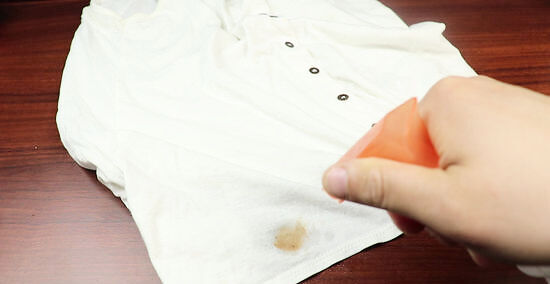
Spray the cleaner directly onto the stain. Fasten the lid of the spray bottle securely, and test it once by spraying it into the sink. Once you are happy with it, spray the solution directly onto the offending stain or stains. Apply it liberally to the stain and leave to it soak for a few minutes or longer, depending on how patient you are. Rinse it off with cold water. If necessary, repeat this for harder stains.
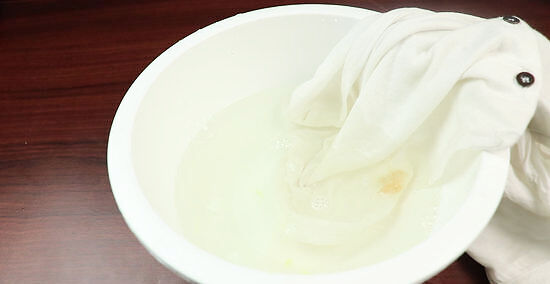
Consider soaking it for larger or stubborn stains. If you have larger stains that wouldn’t be tackled best with a spray bottle, you can modify this method to suit your needs. A diluted version of this cleaner is great for soaking a larger garment in. Simply add the same ratio of hydrogen peroxide and dishwashing liquid to a bucket of hot water. Place your clothes in the liquid and leave it to soak. Rinse it off, and repeat if necessary. You may find gently rubbing the affected area while it is submerged will help loosen the stain.
Tackling Stains on White Clothes with Natural Ingredients

Use baking soda. The chemicals in store-bought stain removal products can be very effective, but can also irritate the skin and some people might prefer a more natural alternative. Baking soda is one of the classics of stain removal. It is well-known as something to grab if there is a spill. Just make a quick paste with some water, gently apply to the stain and let it sink in. You can also combine it with some distilled white wine vinegar.
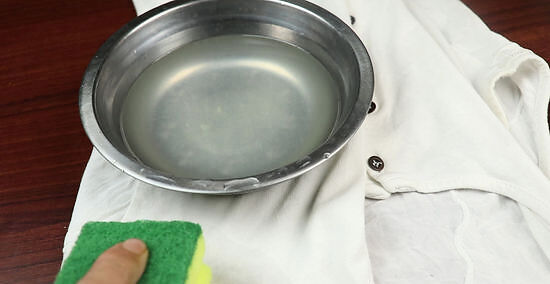
Use lemon juice. Lemon juice is known as a particularly effective way to tackle unpleasant sweat stains on your white shirts and tea-shirts, especially under the armpits. Mix up a solution that is equal parts water and lemon juice, and then rub it into the affected area of the garment. Lemon juice and salt can work well to tackle mildew and rust stains on white clothes. Adding some lemon juice to a white wash can generally refresh the clothes.
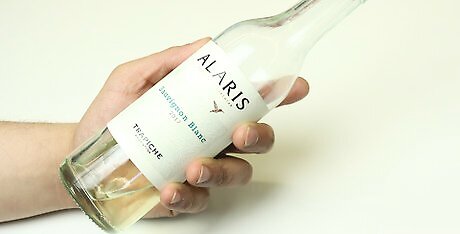
Use white wine. One of the worst things to spill all over your white clothes is red wine, but, perhaps surprisingly, a good remedy for this is to spill more wine on yourself. Take a little white wine this time, and carefully pour it onto the stain and it will work against the red wine. Dab at the edges of the stain gently with some kitchen towel to prevent it spreading. This won’t make the stain disappear, but can help it come out in a normal wash subsequently.

Use white chalk for an oily stain. Oily stains are particularly tricky to deal with as water can make the problem worse. One natural method for oily stains is to use white chalk. Rub some white chalk onto the fabric without being too rough. By doing this, it is the chalk which will be absorbing the oil rather than the clothes. Dust off any excess chalk before putting the garment in the wash. Only wash it in cold water, and don’t put it in the dryer as this can cause the oil to set.
Using Bleach to Combat Stains
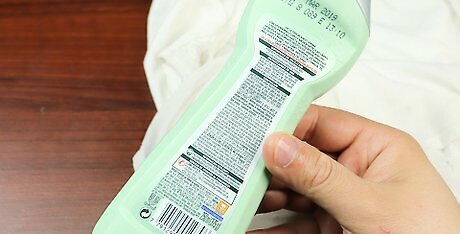
Differentiate between oxidizing and chlorine bleaches. Oxidizing bleaches are less severe than the chlorine versions, and as such are kinder to fabric. Hydrogen peroxide is a commonly used example of an oxidizing bleach which is often used to tackle stains. Chlorine bleaches are much stronger, more toxic, and should be used with care. Chlorine bleaches will damage colour on fabrics, but for white fabrics that is less of a problem. If you use bleach regularly in your machine washes you may find some yellowish marks appear on white clothes.
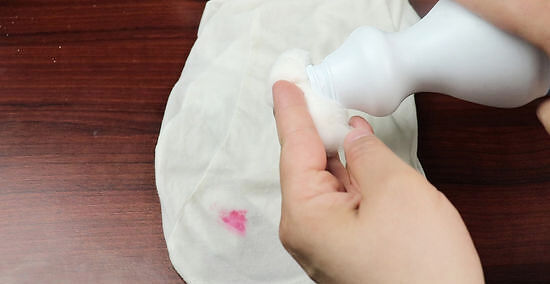
Use bleach to spot clean persistent stains. If you have a really tough to shift stain on something white, the careful application of bleach can help. After a quick spot test, gently dab some bleach onto the reverse side of the affected area of the garment with a cotton swab. Then rest the fabric face down on some kitchen towel. Don’t push down on the fabric or rub against it. After treating the stain with bleach, wash it as normal. Wear rubber gloves if you are using bleach like this.
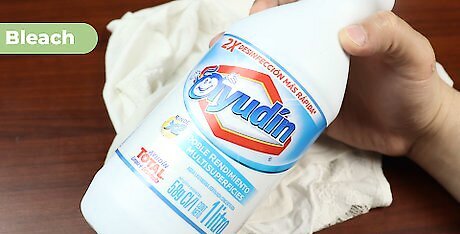
Add bleach to your wash. A less precise way to use bleach to lighten whites and work against stains is simply to add some bleach to your normal wash. Always be sure to read the label to see how much it is recommended for you to add to a washing load. As well as checking the label of the bleach, check the label of any garments you are washing to see if it acceptable to use bleach to clean them, for example you mustn’t use bleach with silk or wool.
Using Ammonia to Tackle Stains
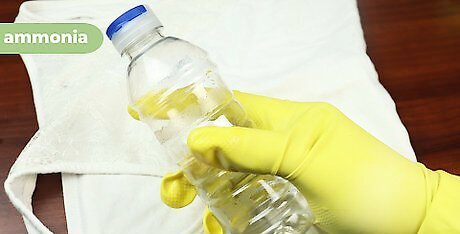
Add ammonia to your wash. Ammonia is an alkaline solution that can be very good at tackling grease and dirt stains. You can use it in a similar way to bleach, by adding a small amount to your normal wash. It is also a strong chemical that is often found as an ingredient in cleaning products, but can be bought on its own. You should NEVER mix bleach with ammonia as the reaction causes highly toxic and potentially deadly fumes. Work in a well-ventilated room and wear rubber gloves if you use ammonia.
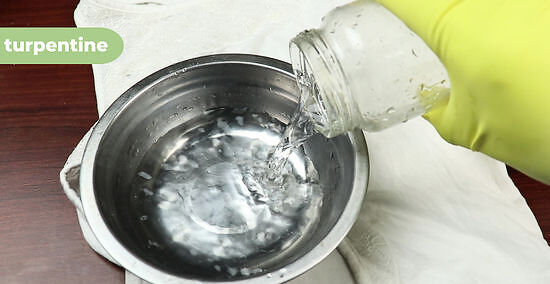
Use an ammonia turpentine solution. If you want to apply the ammonia directly to the stain, you can mix it in equal measures with turpentine to create a good cleaning solution. Once you have mixed up a small amount pour it onto the stain and let it sink in. You can leave it for up to eight hours, before washing it. The first time you wash it after this treatment, be sure to keep the garment separate from other clothes. Concentrated ammonia can damage and stain your clothes.
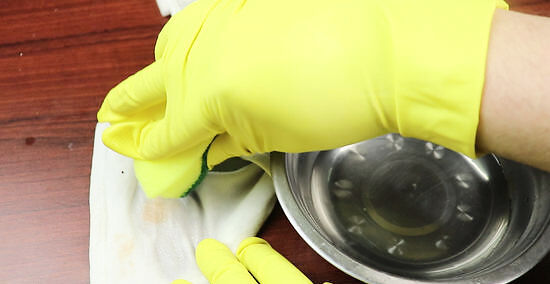
Sponge tricky spots with ammonia. Difficult stains can be treated with ammonia at source by dabbing them with a sponge, which has been dipped in ammonia. This is particularly recommended for stains from bodily fluids, such as blood, sweat and urine. After sponging the stained area wash it as normal.




















Comments
0 comment